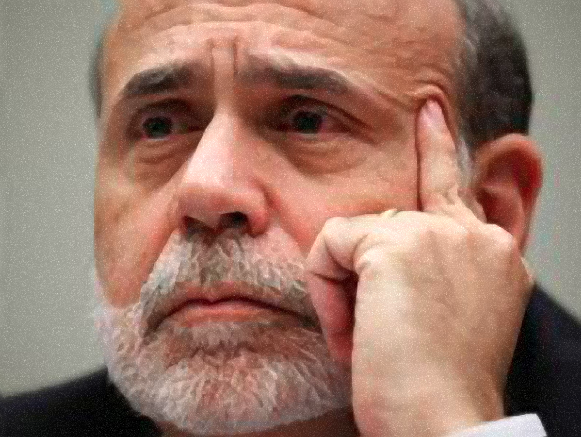
One could say that Benjamin Bernanke is the "Father of Quantitative Easing" and is the chief person responsible for leading the world's central banks down the path of "Easy Money"!
“Go through life parched and empty
Standing knee deep in a river dying of thirst.” — Sung by Kathy Mattea
Paradox is always a challenge to understand… and even more of a challenge to explain! The title lyrics (above) from the 1993 hit song sung by Kathy Mattea is a great example. In fact, it is the image upon which I focused as I researched this article!
The theme of this article is a trend that has been building over a number of months. During the past year, I have noticed a steady uptrend in the number of articles and “white papers” regarding “illiquidity in the bond market”. At first, I was skeptical, figuring the author merely wanted to grab as much attention as she/he could in order to generate the maximum number of “clicks” for their work!
However, as a growing number of veteran market experts echoed that theme, I began to pay much closer attention. I was still mighty puzzled, however, by the paradox of a world literally awash in oceans of central bank liquidity (and government bonds) that is supposedly experiencing a shortage of “liquidity”!
So let’s just “dive in” (the pun very much intended) and begin to take a long look at the extreme paradox of “Bond Illiquidity”.
Take a look at the following graph of the magnitude of issued U.S. Treasury Bonds:
As you can see, the U.S. Treasury market has ballooned by almost 180% since 2007 – to $12.5 trillion.
Logically, one would think that bond trading volume would increase commensurately. Alas, the opposite is true – in significant part because the Fed and Treasury are holding so much of the treasury bonds that have been issued. But even considering that, it is virtually shocking that the daily trading volume in U.S. Treasuries has tumbled by almost 11.5%… to just $505.4 billion/day. Expressed in different terms… the Treasury market boasted in 2007 a daily turnover of 12.63%. That rate has shrunk so much that in 2014, it was a mere 4.04% (a record low)!
So far, we’ve only considered the Treasury Market. What about U.S. Corporate Bonds?
As most of us know first hand, the Federal Reserve’s ZIRP (Zero Interest Rate Policy) strategy has left investors struggling to find reasonable investment choices[1] through which to earn appreciable interest. One of the choices turned to by millions of investors has been Corporate Bonds – in particular, the “High Yield” (“Junk”) Bond Market. So as a direct result of sinfully low US Treasury rates, cash invested into the Corporate Bond Market has ballooned since 2007 by almost 50% to nearly $8 trillion.
We’ve already seen how the Federal Reserve and market forces have significantly reduced liquidity in the U.S. Treasury Market. So the natural question to ask is: “What has changed in the Corporate Bond Market to compromise liquidity?”
The biggest factor bollixing things up in the Corporate Bond Market since 2007 has been Federal regulatory changes – namely, the Dodd-Frank Financial Reform legislation.
At this point, I feel the need to offer a pre-emptive “Disclaimer”. I do not trust Goldman Sachs (GS), Morgan Stanley (MS), JP Morgan Chase (JPM), UBS (UBS), Deutsche Bank (DB), or any of the many other major international “Big Finance” companies. In my mind the only difference between them and John Pierpont Morgan (the 19th and early 20th Century manipulator of U.S. and international finance[2]) … is that ”control” does not rest with just one individual!
That being said, whenever the government ventures into the regulation of areas that include more than one “moving part”, the result will invariably include a set of “unintended consequences” that threaten to lead to side effects for which no one[3] will be willing to claim responsibility! Corporate Bond illiquidity is one of the “unintended consequences” of Dodd-Frank regulation!
During the heat of the 2007-09 Financial Crisis… all that the politicians in Washington D.C. knew was that the big banks’ role in creating that Crisis was a political “hot button”. So Congress[4] enacted legislation that increased “capital charges”, thereby creating huge risks and lower profitability for banks that engage in “Secondary Market Making”. The result has been deleterious, as observed by John Stopford, co-head of multi-asset investing for Investec Asset Management:
“Tighter bank regulation makes it more expensive for banks to hold bond inventories, which reduces their desire to provide liquidity to the market.” The consequence has been that it has become much more challenging for investors of all sizes to trade corporate debt.
This is in sharp contrast to 2007, when a liquid and vibrant secondary market in corporate bonds was maintained by the “usual suspects” I identified moments ago in my “Disclaimer”. Back then, the “Primary Dealers” who stewarded Market Making in the corporate bond market held inventories of U.S. corporate bonds that encompassed capital of $212 billion – equal to just over 4% of the entire US corporate bond market!
Paradoxically, as that bond market has grown by almost 50%, those inventories have plummeted to a mere $59.8 billion!! What this means is the Primary Dealer inventory of these bonds is now an almost infinitesimal 0.76% of the total U.S. corporate bond market that amounts to over $7.8 trillion!!
A great illustration of the impact of regulatory overreach by Congress comes from the first hand experience of Norval Loftus, who serves Allegra Asset Management as their chief investment officer. Loftus testifies that trading corporate bonds has become much more complicated and challenging during the past seven years:
“It’s like night and day compared with six or seven years ago. There’s no comparison. It’s even tougher than it was six or seven months ago. It’s getting more and more difficult all the time.”
Robert Stheeman, in charge of the U.K. Debt Management Office, would be happy to jump into our bond liquidity review to warn us that this illiquidity issue has not just impacted corporate bonds. Recently, Stheeman warned that the gilt market (British bonds) is also at serious risk of falling liquidity!
At this point, let’s be sure that we are all on “the same page” regarding the meaning of the term Liquidity:
Liquidity is generally taken to mean the ease with which an investor can quickly buy or sell a security without moving its price.
Market Tamers know that equities and equity options trade on exchanges. In contrast, bonds have typically traded over-the-counter… with (traditionally at least) investment banks playing an integral role in the facilitation of corporate bond buy and sell orders.
Post “Dodd-Frank” legislation, this is how one veteran bond trader describes the current reality vis-à-vis “the good old days”:
“A few years ago, you would go to your favored bank with a large block, they would show you a price, they would take it onto their balance sheet, hedge it and then trade out of it. Banks can’t do that any more.”
Without adequate liquidity, the “price discovery” process has become much more challenging and uncertain. Therefore, regular bond traders have been pushed into reconsidering their core bond strategy (ies). In that regard, a study by the Royal Bank of Scotland has concluded that U.S. credit market liquidity has dropped by as much as 90 percent since 2006. In fact, this precipitous drop has prompted one LNG Capital trader to observe that several fund managers have altered their primary bond strategy to a “buy and hold until maturity” strategy rather than trading those bonds and booking gains (or losses)!
In the event you might be struggling with this explication regarding the paradox of bond illiquidity within the context of an unparalleled expansion in outstanding sovereign and corporate bonds… consider the following (admittedly anecdotal) evidence:
1) On October 15 of 2014. The U.S. bond market experienced a remarkable (and frightening) “Flash Crash”… during which the bond market tumbled an astounding 35 basis points in short order… only to regain most of that fall by the close of trading:
2) Remember back in February and early March, following the European Central Bank’s announcement regarding turning on the monetary spigot some more… thereby flooding the markets with more currency and more bonds?
At that point the “consensus” view leaned toward a conviction that lower interest rates would hold sway … the Euro would move both to, and perhaps lower than, “par” (that is 1 Euro = $1)… and U.S. Treasuries would continue moving higher or remain steady because of high global demand for “safety” and liquidity.
And how did THAT strategy work out?
Well, as boaters know, when everyone in the boat leans in “one direction” (Duh!) the boat gets unstable and tips over. That is never a good thing in the boating world… nor is it a great idea in the investment world.
Here is what happened to the iShares 20+ Year Treasury Bond ETF (TLT) following March 18th:
Looking backward, it is not surprising to see that when the market becomes “unbalanced”, all the usual “trends” and “rules” become irrelevant. Specifically, during TLT’s “fall from Grace” (depicted above), the “normal rule” that bonds spike upwards when stocks tumble downward was no where to be found!!
UBS bond strategist, Thibault Colle, describes this seemingly quixotic and quite unusual action in the bond market in these terms:
“A lot of investors were long and overweight duration, buying into the lower yields for longer argument underpinned by (ECB) QE.”
“I expect the hit is pretty big and widespread. Because of the lack of liquidity, the adjustment has been more brutal, with moves in reaction to macro data several times larger than what they would usually be.”
Other unusual bond activity since January has included a 47-basis point (bp) run-up in the yield on the 10-year German Bund since mid-April, while yields on U.S. Treasury 10-year Notes surged as much as 35-bp (from 1.85%to 2.20%) (see the chart below):
These growing trends have been raising alarms among knowledgeable market experts. For example, former PIMCO executive, Mohamed El-Erian, recently warned of tumultuous times ahead when the Federal Reserve finally decides to start lifting rates:
“We have this illusion of liquidity for when the paradigm changes. It’s not just an illusion, it’s a delusion.”
Lest you suspect El-Erian was using such startling adjectives merely to stir up attention (and generate Internet clicks), consider that the eventual Fed rate hike would be the first since 2006! In addition, the U.S. bond market is nearly twice the size of the U.S. stock market[5], so the fact that investors (large and small) have been pouring billions into bonds over the past 6 years leads many experts to worry what will happen when a potential “Rate Riot” (large blocks of investors heading for the exit) dwarfs the 2013 “Taper Tantrum” in terms of bond volatility. The worst fear among these observers is that the consequence of current bond illiquidity might include a financial event that resembles the 2007-09 Crisis in magnitude.
Andy Hill, who serves as the director of market practice and regulatory policy for the International Capital Market Association (ICMA), is rather representative of those market observers who fear challenges ahead.
“We are in a position where pretty much every investor is positioned the same way. When people start selling, they will all be sellers at the same time and that is a problem, particularly in the current climate.”
“The problem might be if a huge bond fund gets redemptions because people are moving out of bonds and into equities. You’re going to have a situation where people become forced sellers and there’s no natural buyers.”
One of the more imaginative and creative market observers described this prospect as “The TOWHOMA Market”… meaning, when I decide to reduce or eliminate my bond position, TO WHOM will I be able to sell it? If I can't find anyone willing to buy at a reasonable price, I've got a serious problem!
Even normally taciturn U.S. regulators have expressed concern about these trends. Daniel Gallaher is one of the officials on the U.S. Securities Exchange Commission. Recently Bloomberg quoted him as saying the following:
“Lack of liquidity in corporate bond market is ‘systemic risk' not addressed by regulators”.
Then Gallagher cited the 80% decline in corporate bond inventories among dealers (referred to much earlier) and the impact of higher interest rates on bond trading looking forward. As Gallagher pointed out, the dwindling of inventory contrasts sharply with “a record level of issuance year after year since 2008 of $1 trillion-plus of corporate debt.'”
Putting specifics to Gallagher’s generalities, consider this:
In 2005, corporate bond sales by non-bank British and European companies totaled $155.7 billion… almost $16 billion more than 2004.
However, in sharp contrast, those same companies combined for $458.5 billion in bond issuance in 2013 (nearly 3 times the size) and another $435.5 billion in 2014![6].
Adding to the “potpourri” of reasons to be concerned about bond liquidity is the “group think” conclusion that resulted from a survey in November of 2014 by the International Capital Market Association (ICMA) of investors, analysts, and traders from within the European corporate bond market. The ICMA reported that the most common fear among those who responded to their survey was that a “meltdown” within global credit markets is (essentially) unavoidable.
One last variable within this intriguing mix of reasons to be concerned about bond liquidity is the fact that on a global basis, ETF’s have become a growing force within investment markets (exceeding $3 trillion in total assets) and yet are “untested” in the midst of true market crisis! If ETFs were used exclusively by individual investors, that would be one thing… but the flexibility and low cost structure of ETFs has enabled institutional investment managers to use certain ETFs as a convenient and speedy source of market exposure… or fund liquidity – depending upon the manager’s need at the moment.
Having just read several “experts” describe why we don’t need to be concerned about “uncertainty” with regard to how ETFs will function in a crisis, I must say their various rationales sound all too similar to the rationales offered in 2007 regarding why the financial models used by banks back then in the design of mortgage securitization was “safe”!!
For example, here is a quote from one expert regarding why the ETF structure will be able to handle high volatility:
1) First, the volume of assets within Fixed Income ETFs is totally dwarfed by the total size of the corporate board market itself ($95 billion versus $7.8 trillion).
2) Once any given popular fixed income ETF reaches a high enough notional value, then the secondary market is able to support its own trading activity without needing to rely strictly on the standard “creation/redemption cycle” (which would involve the sale of the ETF’s underlying assets.
a) What this means is that “In essence, these ETFs serve as an additional liquidity layer for the underlying market.”
3) Here is where the “gobbledygook” of investment doublespeak enters the picture.
a) While the “cost of liquidity in the underlying securities provides the upper and lower bound for ETF trading spreads:
b) According to Anthony Perrotta Jr., the head of fixed-income research at the TABB Group:
The “real downside risk scenario is not so much how the ETF prices, but what exactly is the imbalance between asset owners looking to transact and liquidity providers willing to make a market.”
c) At that point, once the upper or lower bands of ETF value are reached, market makers and authorized participants would create or redeem ETF shares and buy or sell underlying securities to arbitrage the spread between an ETF and its net asset value.
d) In more volatile conditions, the underlying securities could trade at wider spreads, which could cause an ETF’s market price to experience greater premiums or discounts to the NAV.
You may be much brighter than I am and find some new insight within the above that provides you with relief and comfort vis-à-vis bond liquidity … an insight that I am not able to discern. However, as far as I am concerned, I remain “on guard”.
In addition to the explication above, I can’t resist adding one more view from a knowledgeable market professional:
As fixed income assets invested within mutual funds have ballooned during the past few years… Barbara Novick, a vice-chairman at the world’s largest asset manager (BlackRock) admitted two months ago that government regulators have become concerned:
“There is a conflation from regulators on what is the risk of investors and what is the risk of investment managers.”
There is good reason for this concern. Specifically, BlackRock is just one among countless managers who have witnessed their assets under management skyrocket! BlackRock itself has grown its fixed income assets from a mere $26 billion to almost $140 billion (per Morningstar).
Countering the concern of regulators, Ms. Novick offers this all so comforting insight regarding where “market risk” really resides:
“The market risk is with investors… as an asset manager does not guarantee the funds. The idea that the asset manager creates risk or might fail and create risk is not the case.”
Now that makes me feel ever so much better!
INVESTOR TAKEAWAY:
My intention in writing and publishing this is not to alarm anyone! In fact, I have considered writing on this topic for quite a few months now, but I resisted each time because the central paradox of illiquidity within a world awash in “money” was mentally and emotionally vexing.
However, the mounting evidence of imbalances within global bond markets became too compelling for me to avoid any longer.
So what can we learn from the above?
1) Never take anything “for granted” in the investment world.
2) When you sense that “everyone” has started to lean in one direction on any single investment instrument (eg. “the Euro is going down to ‘par’ with the U.S. Dollar”; “10-year Treasury interest rates are going to stay below 2% until later in the year”; “Brent Crude is headed down to $30/barrel”) … you had better “Watch Out”!!! The “boat” is about to tip the other way.
3) Never assume that what were once dependable “rules” within the realm of investing will continue being dependable.
a) The biggest takeaway from the above story is to remember, at all times, that we have never before invested within a world in which all major sovereign banks have flooded the monetary system with cheap money.
b) Add in the “wild card” of government regulation … regulation that was intended to reduce risk but might well result in having increased risk … and we face a future that, at best, leaves us with uncertainty.
c) And how do the markets feel about uncertainty…? Yes, the markets detest uncertainty!
Therefore, I suggest that we all:
1) Keep alert.
2) Expect the unexpected.
3) Be judiciously diversified and/or “hedged”.
Good luck out there!
DISCLOSURE:
Like all prudent investors, the author has a significant portion of assets in both corporate and sovereign bonds. The author was caught off guard by the October 15th bond “Flash Crash”… and was more than mildly surprised that the 10-year U.S. Treasury Bond shifted sentiment so quickly between April and May. Nothing in this article is intended as a recommendation to buy or sell anything. Always consult with your financial advisor regarding changes in your portfolio – either subtractions or additions.
FOOTNOTES:
[1] Short of opening up a “Juice Loan” outlet
[2] Deserving of the adjective “Robber Baron”
[3] Not even “know nothing” Senators and Congresspersons
[4] Resourced by Congressional Staffers who were still so wet behind the ears as to not have lived through more than a couple of economic cycles
[5] Per a 2012 study by Kellogg School of Management professor, Torben Anderson, the U.S. bond market is just under $37 trillion, while the market capitalization of the U.S. stock market is about $21 trillion.
[6] These figures are from Dealogic
Related Posts
Also on Market Tamer…
Follow Us on Facebook

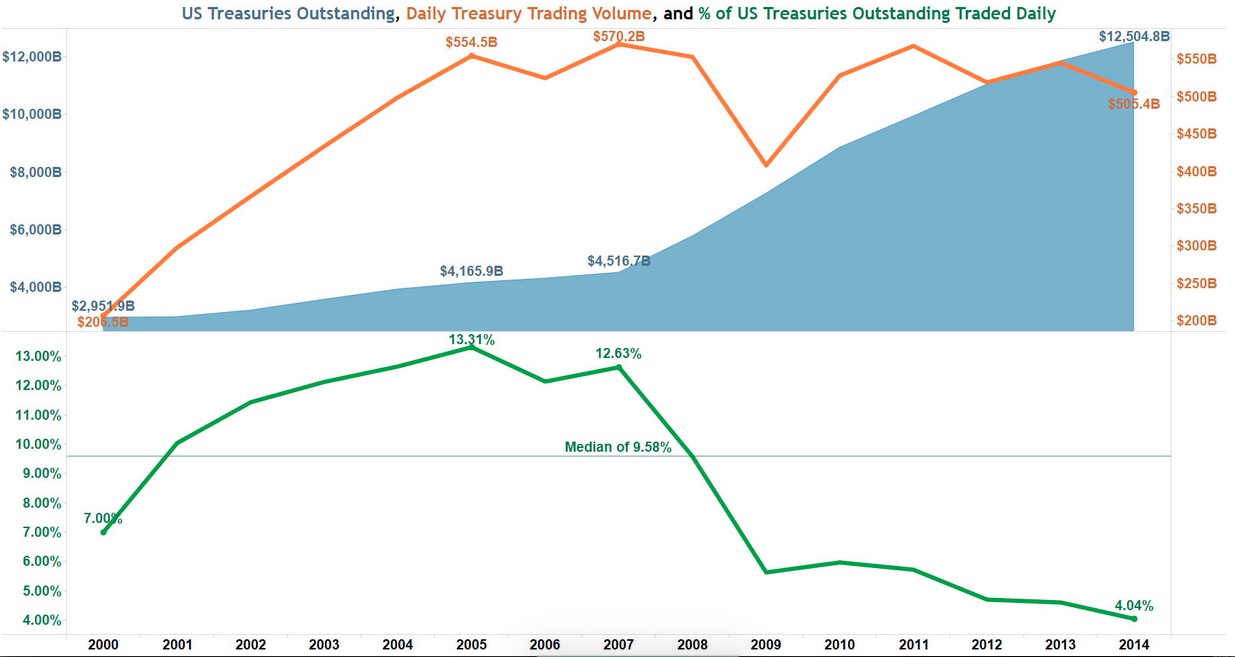
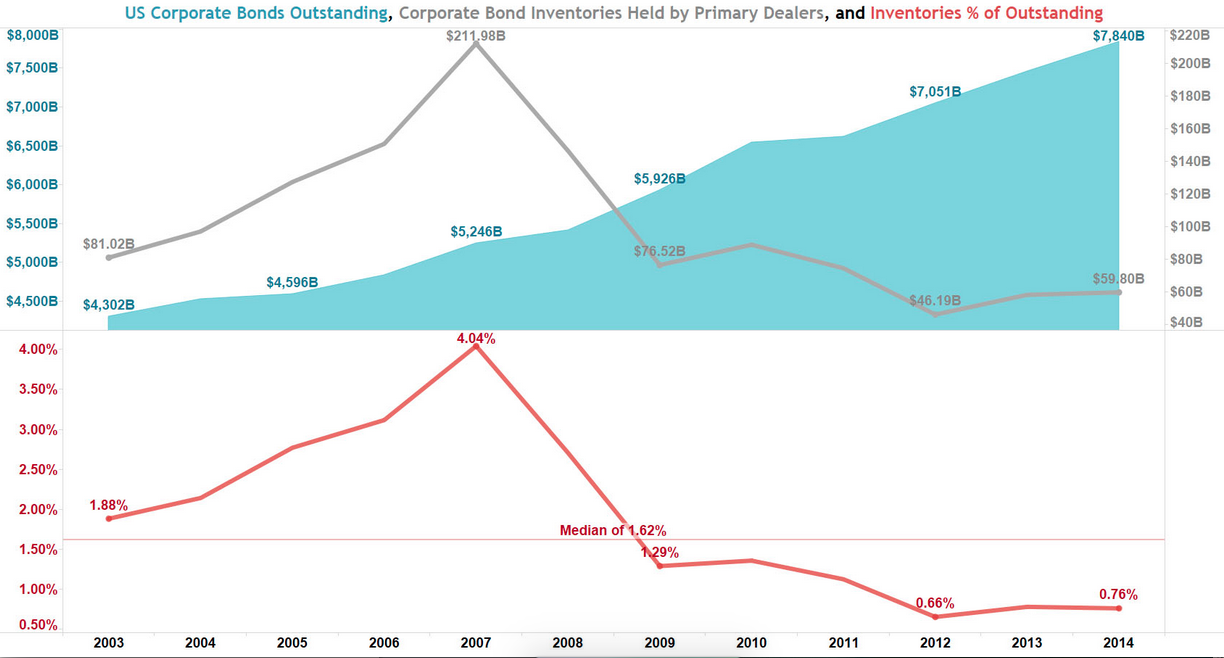
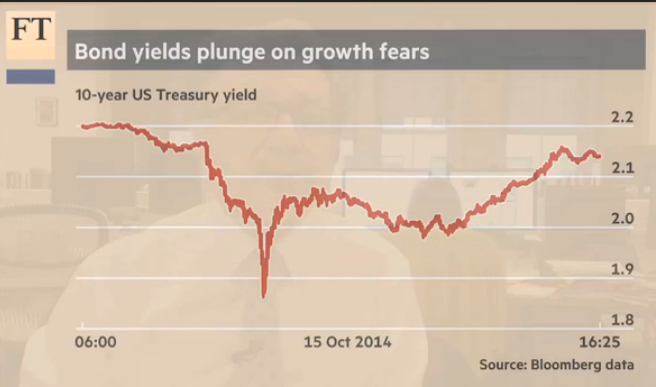
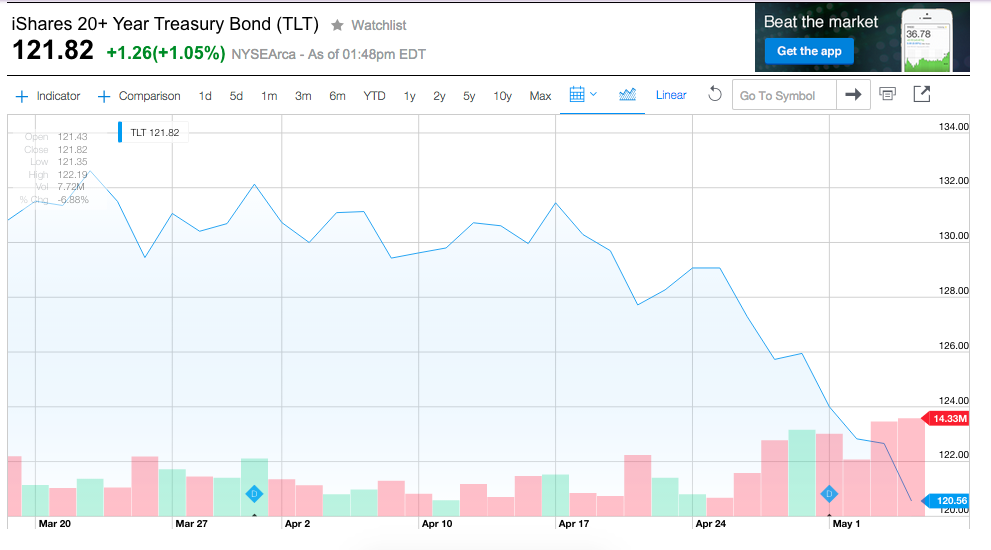
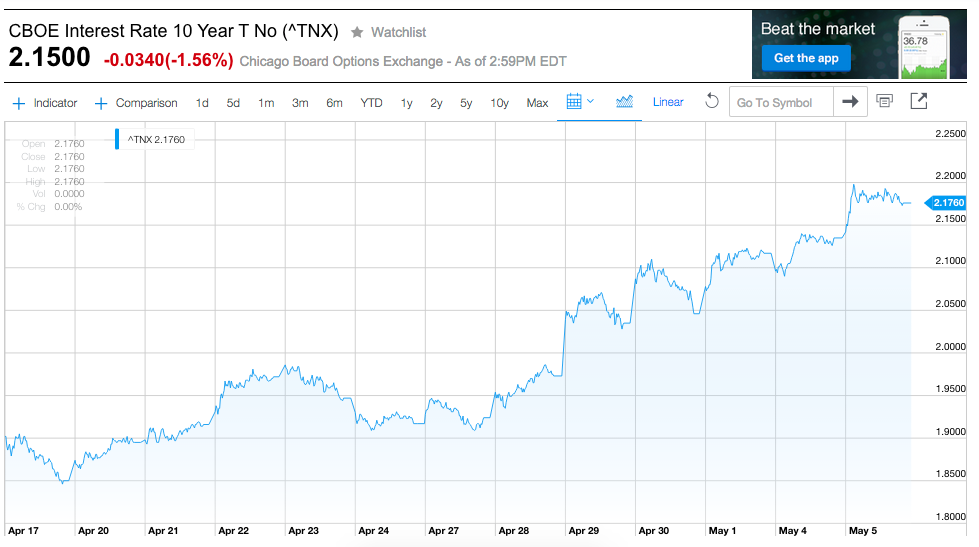
 Why Bitcoin, Ethereum, and Dogecoin Are Surging Higher Today
Why Bitcoin, Ethereum, and Dogecoin Are Surging Higher Today


